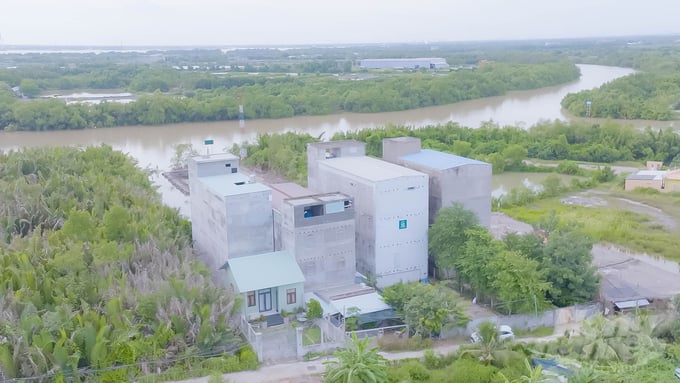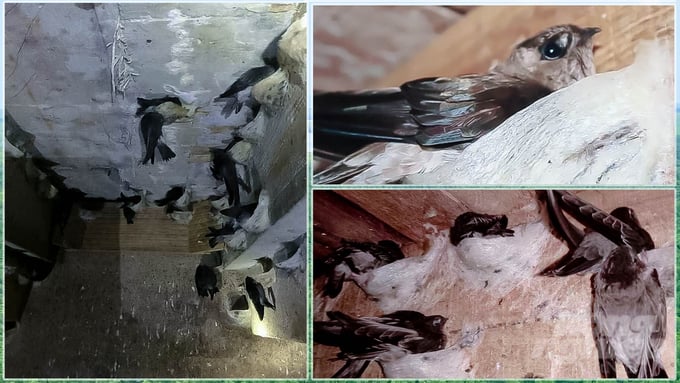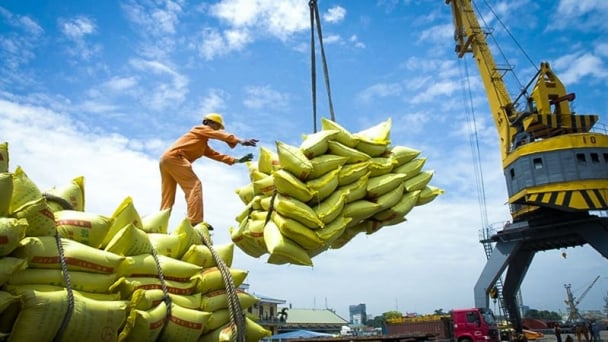May 30, 2025 | 22:22 GMT +7
May 30, 2025 | 22:22 GMT +7
Hotline: 0913.378.918
May 30, 2025 | 22:22 GMT +7
Hotline: 0913.378.918

Bird nest farming profession in the city. HCM has gone through 20 years of development but still does not have its own brand. Photo: Le Binh.
It is uncommon to find a location as conducive to swiftlet farming as Ho Chi Minh City.
The topography of the Metropolis is rather plain, with a temperate climate and stable temperature throughout the year, as well as fewer storms and natural disasters, creating an ideal environment for swiftlet flocks. Furthermore, Ho Chi Minh City is a big on-site consuming market with the ability to implement a lot of modern techniques in swiftlet farming.
In comparison to other cities across the country, Ho Chi Minh City began swiftlet farming and bird's nest extraction quite early. According to the Ho Chi Minh City Subdepartment of Livestock Production and Animal Health, ten pilot swiftlet farming houses have been established in Tam Thon Hiep commune, Can Gio district, since 2008.
Today, there are 735 swiftlet farming houses, mostly concentrated in 17 districts. Can Gio district has the most swiftlet agricultural houses, followed by Nha Be, Binh Chanh, and Cu Chi districts, among others. In 2023, the average exploitation production for the entire city is anticipated to be around 14 tons.

Bird's nest in the city. In Ho Chi Minh City, most of the products are pre-processed and sold to the market in raw form, which does not bring high economic value. Photo: LB.
Can Gio district is regarded as a swiftlet agricultural paradise not just in Ho Chi Minh City, but across Southeast Asia. According to Ho Ngoc Thien, Head of the Economic Office of Can Gio district, the location has a number of benefits for swiftlet farming to harvest bird's nests that are rarely seen in other places. "The majority of Can Gio is mangrove and abundant insects serve as a rich feed source." Can Gio swiftlets be less harmed by pesticide residues during prey due to their exclusion from farming areas. Furthermore, Can Gio does not engage in industrial growth, thus swiftlet items are rarely infiltrated by hard mental. These are the requirements and sufficient conditions for the safe development of swiftlet farming while being competitive in the market," Thien explained.
Can Gio is an example of Ho Chi Minh City's green lung. This is Vietnam's first world biosphere reservoir.
"The International Transshipment Port in Can Gio will be inaugurated at the end of 2024, with a runway on the sea to boost Can Gio's economic and tourism development." "The Can Gio Bridge construction is scheduled to begin in early 2025, with a total capital of nearly 15,000 billion VND to commemorate the 50th anniversary of the country's reunification," Mr. Hong stated.
As a result, the development of the swiftlet farming industry in Ho Chi Minh City creates enormous potential not only for tourists but also for other sectors, leading to an increase in land value, and models, and attracting a large number of local people.
Unfortunately, swiftlet products lack a brand and market presence in Ho Chi Minh City. "Can Gio's swiftlets are leading the way," said Mr. Le Thanh Dai, Chairman of the Vietnam Swiftlet Association. Although swiftlet farming began in 2004, it took nearly 20 years for Can Gio's swiftlets to focus on producing OCOP products, building a brand, and establishing an association. Currently, 42 provinces and towns around the country have swiftlet farming regions, and the majority have swiftlet associations, recognizing this as a vital crop."The vast majority of swiftlet houses in Ho Chi Minh City are self-built and unregistered with local authorities." These houses are either not permitted to be built or are permitted as residential structures but have been modified and enlarged into swiftlet farms. Some houses are even scattered throughout residential neighborhoods.
"According to survey results, 10% of swiftlet houses are built on agricultural land, 66% on non-agricultural land, and 22% on residential land." "Houses with permits account for 69 of the 69 households surveyed," said Mr. Nguyen Huu Thiet, Deputy Head of Ho Chi Minh City's Department of Livestock Production and Animal Health.

The sad reality is that the bird's nest is shifting and no longer lives in coastal areas, including Ho Chi Minh City. Photo: LB.
The Vietnam Swiftlet Association noticed a shift in swiftlet populations after making the map, with swiftlets concentrating around the border areas with Laos and Cambodia rather than along the Vietnamese coast. The reason is dwindling food supply, which poses a substantial issue for Ho Chi Minh City homes and enterprises engaged in swiftlet farming.
The number of swiftlets in the United States is declining by 30% to 50%. The rapid and abundant rise of self-built swiftlet dwellings is the cause. As a result, unless the number of spontaneously built swiftlet houses is controlled, Ho Chi Minh City is likely to face increasing difficulties. "According to the Association's statistics, there are currently about 30,000 swiftlet houses nationwide, with a total population of over 1 million swiftlets." As a result, if swiftlets are spread uniformly, each swiftlet home only contains roughly 200 - 300 swiftlets, not to mention smaller houses with only 30 - 50 swiftlets. Meanwhile, the failure rate of swiftlet farming is over 80%, according to Mr. Le Thanh Dai.

"Go first and go later" but TP. Ho Chi Minh City still needs to build its brand soon if it does not want bird's nest products to continue to "lose at home". Photo: Le Binh.
Reporters from the Agricultural Newspaper of Vietnam had to work hard to find Ho Chi Minh City's swiftlet items locally, but they were only able to find a handful. The majority of the products were branded swiftlet products from other regions, which were sold in supermarkets and retail chains. Alternatively, merchants verified that their products primarily originated in Khanh Hoa, Kien Giang, Ninh Thuan, and even Tay Ninh and Long An at raw swiftlet nest trading groups in Ho Chi Minh City.
Mr. Nguyen Nguyen Phuong, Deputy Director of the Ho Chi Minh City Department of sector and Trade, symbolically compared Ho Chi Minh City's swiftlet sector, particularly in the Can Gio district, to a "beautiful princess sleeping in the forest." It is time to reawaken this princess after many years of development.
"Ho Chi Minh City is a large market with a diverse range of goods." However, it is difficult to discover a local specialty product to present and use as a gift. Can Gio's swiftlet products are well-known for their nutritional value and great yield. This product has piqued the curiosity of the city's leaders as well. "It's time for us to collaborate to grow the swiftlet farming profession and the Ho Chi Minh City swiftlet brand," Mr. Phuong stated.
Translated by Linh Linh
/2025/05/29/5625-12-214801_567.jpg)
(VAN) Provincial mergers in the Mekong Delta promise to streamline administration, expand inter-provincial raw material areas, and foster close linkages in agricultural value chains, benefiting both businesses and cooperatives.

(VAN) Merging Mekong Delta provinces contributes to the expansion of agricultural raw material areas, addressing previous constraints caused by provincial boundaries. Additionally, this expansion will reduce costs and strengthen linkages between businesses, cooperatives, and farmers.
/2025/05/29/1043-2-153730_145.jpg)
(VAN) The Government's policy to merge provincial-level administrative units opens up major opportunities for the Mekong Delta region to reshape its agricultural development strategy toward large-scale production, effective regional linkages, and sustainability.

(VAN) The mutual export of agrifood products between the European Union (EU) and the United Kingdom (UK) must occur again without certification, border controls or other red tape. This was agreed at the UK-EU summit.
/2025/05/22/5121-2-173645_677.jpg)
(VAN) NBSAP Tracker identifies strengths and areas for improvement in the National Biodiversity Strategy, based on each region’s priorities and capacities.

(VAN) The draft amendment to the Circular on rice export trading stipulates a periodic reporting regime for rice exporting enterprises.

(VAN) Dong Thap farmers attained an average profit margin of 64% during the summer-autumn 2024 crop (first season), while An Giang and Kien Giang farmers followed with 56% and 54%, respectively.